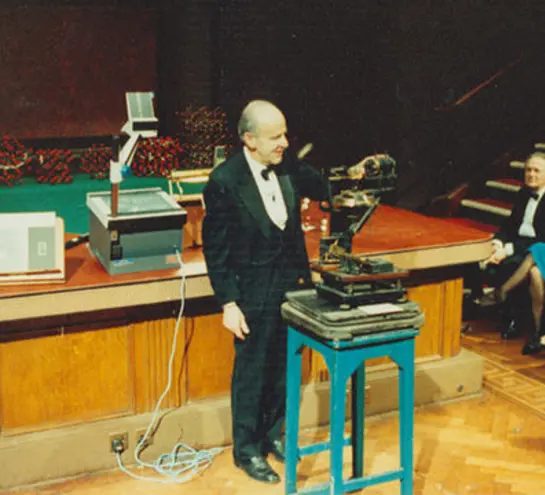Ri positions
- Reader in Crystallography, 1954-1968
- Fullerian Professor of Physiology and Comparative Anatomy, 1973-1979
Max Perutz was born in Vienna where he attended the Theresianum, a prestigious private academy, before studying biochemistry at the University of Vienna. From 1936 he studied crystallography with JD Bernal at the Cavendish Laboratory at the University of Cambridge. There he began his lifelong work on the structure of haemoglobin which he eventually determined in 1959.
Following the German annexation of Austria Perutz was left without an income. The Director of the Cavendish Laboratory, Lawrence Bragg, came to his rescue by obtaining a grant permitting him to be an assistant in his laboratory.
Following the outbreak of the 1939-1945 war, Perutz was interned by the government (as virtually all Austrians in England were) and sent to Quebec. After lobbying by Bragg he was released and returned to England where he worked on an unsuccessful project to use icebergs as aircraft carriers.
From 1945 Perutz worked again at the Cavendish for two years. He then became Director of the Medical Research Council's Unit for Molecular Biology (located in the Cavendish) where he supervised the work of Francis Crick and James Watson on the structure of DNA.
At the Ri, a post Perutz held concurrently with working in the Cavendish, he worked on the structure of haemoglobin, for which he won the Nobel Prize in Chemistry in 1962 with John Kendrew. It happened to be the same year that Watson, Crick and Maurice Wilkins shared the Nobel in Medicine for their work on the structure of DNA.
Also in 1962, Perutz became the first Chairman of the Laboratory of Molecular Biology, the successor to the Unit. From 1979 he was a staff member of the Laboratory and continued to be very active in research and lecturing.
